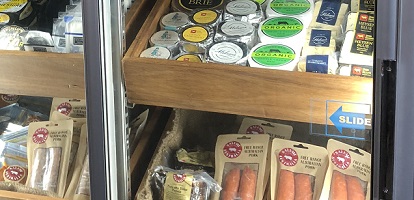Learn about Post-Harvest Refrigeration
In today’s world, refrigeration, and the technology behind it, is one of the most important aspects in the food supply chain and paramount in getting food from the farm to the consumer in a fresh, edible and safe state. Not only food, but also cut flowers, seeds, extracted oils and other products produced by farms all need to be kept at an optimum temperature; hence an understanding of refrigeration may be very important to farmers, traders and manufacturers of most types of farm produce.
Learn about post-harvest refrigeration of agricultural produce:
- What to cool, chill, refrigerate or freeze
- How it is done
- The benefits for different farm produce

Lesson Structure
There are 8 lessons in this course:
-
Nature & Scope of Refrigeration
-
The Refrigeration Process
-
The Vapour Compression System
-
Heat Load Calculations
-
The Refrigeration Cycle: Refrigerants & Components
-
Applied Refrigeration: Farm Produce
-
Applied Refrigeration: Other Products
-
Freezing Goods
Aims
-
Explain the nature and scope of tropical plants.
-
Discuss cultural characteristics that are often peculiar to tropical plants.
-
Describe the taxonomy and culture of a range of soft wooded tropical plants including annuals, perennials and bulbs.
-
Describe the taxonomy and culture of Heliconias and gingers.
-
Describe the taxonomy and culture of palms and palm-like tropical plants.
-
Describe the taxonomy and culture of climber, tree and shrub tropical plants.
-
Describe the taxonomy and culture of orchids, ferns and bromeliads.
-
Describe the taxonomy and culture of herbs, vegetables and fruits in tropical conditions.
-
Determine ways to grow tropical plants outside of the tropics.
-
Explain the use of tropical plants in landscaping.
NATURE OF REFRIGERATION
Refrigeration is the removal of heat from a space or a substance whether in the form of solids, liquids or gases in order to lower their temperature. More specifically, refrigeration is the process of removing heat energy from a low temperature reservoir and transferring it to a higher temperature reservoir. The process is cyclical in nature meaning that it repeats itself. The heat transfer work is generally driven by mechanical means however it can also be driven by heat, magnetism, electricity, sound or other means.
Refrigeration has many applications ranging from domestic household refrigerators to larger industrial refrigerators/freezers and cryogenics.

Why Refrigerate?
Many food products can become spoiled because of the internal chemical reactions that can cause ripening, fermentation and the growth of certain moulds and bacteria. These processes can be stopped altogether or slowed down significantly by the storage at low temperatures. The optimum storage temperature varies between the different kinds of products. In order to preserve moisture within products, many are stored and chilled in areas where the humidity is kept at a high level. This ensures that moisture is retained in the air and avoids excessive moisture loss from the product.
Once produce is harvested it deteriorates quickly unless it can be promptly placed in a cool environment. Transportation from farm cool rooms to the food markets or food processors also causes deterioration - if the produce isn’t handled and cooled correctly. Refrigerated transport vehicles are very commonly used for this purpose. Refrigeration, therefore, has a high impact in society and industry today due to the need to preserve items of food or produce to enable transport to take place over long distances and durations and to keep products at peak freshness. This preservation prevents the spoilage of items for extended periods of time.
